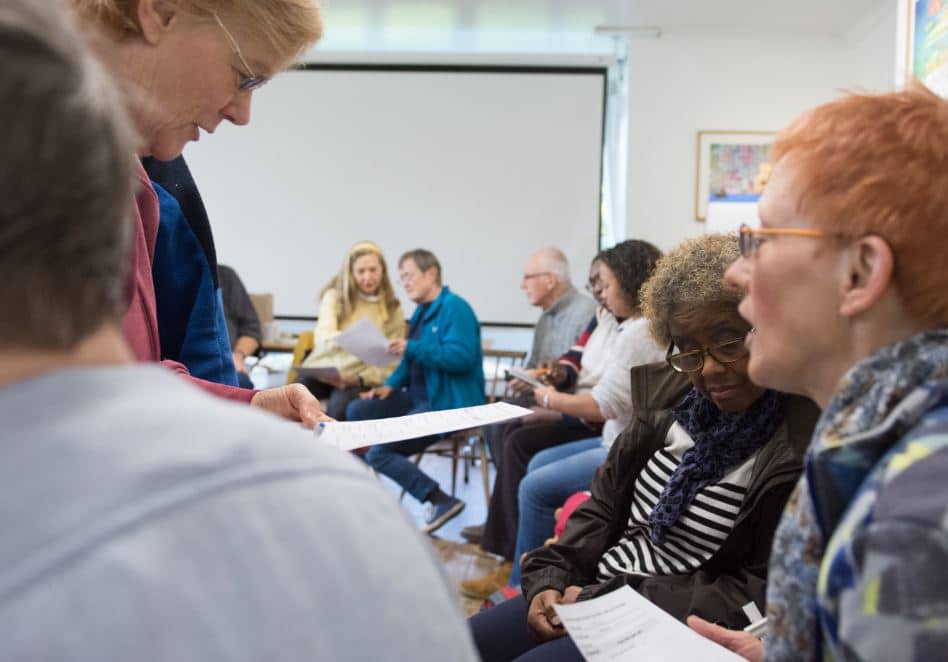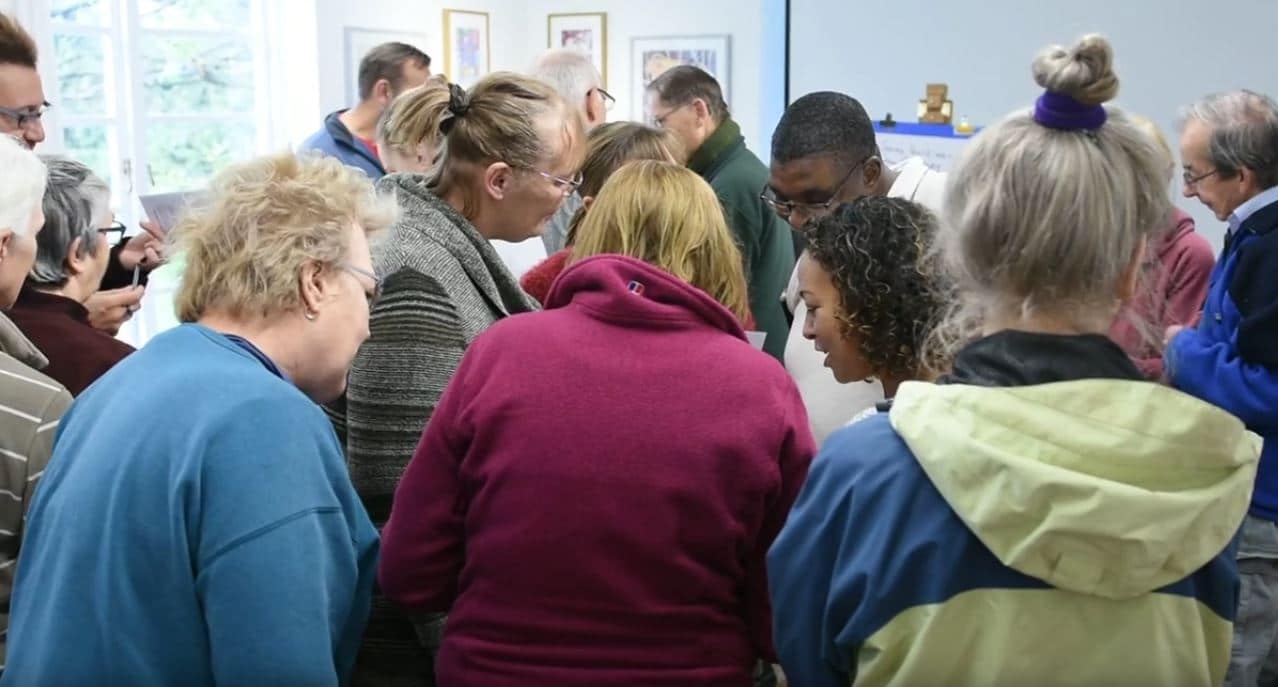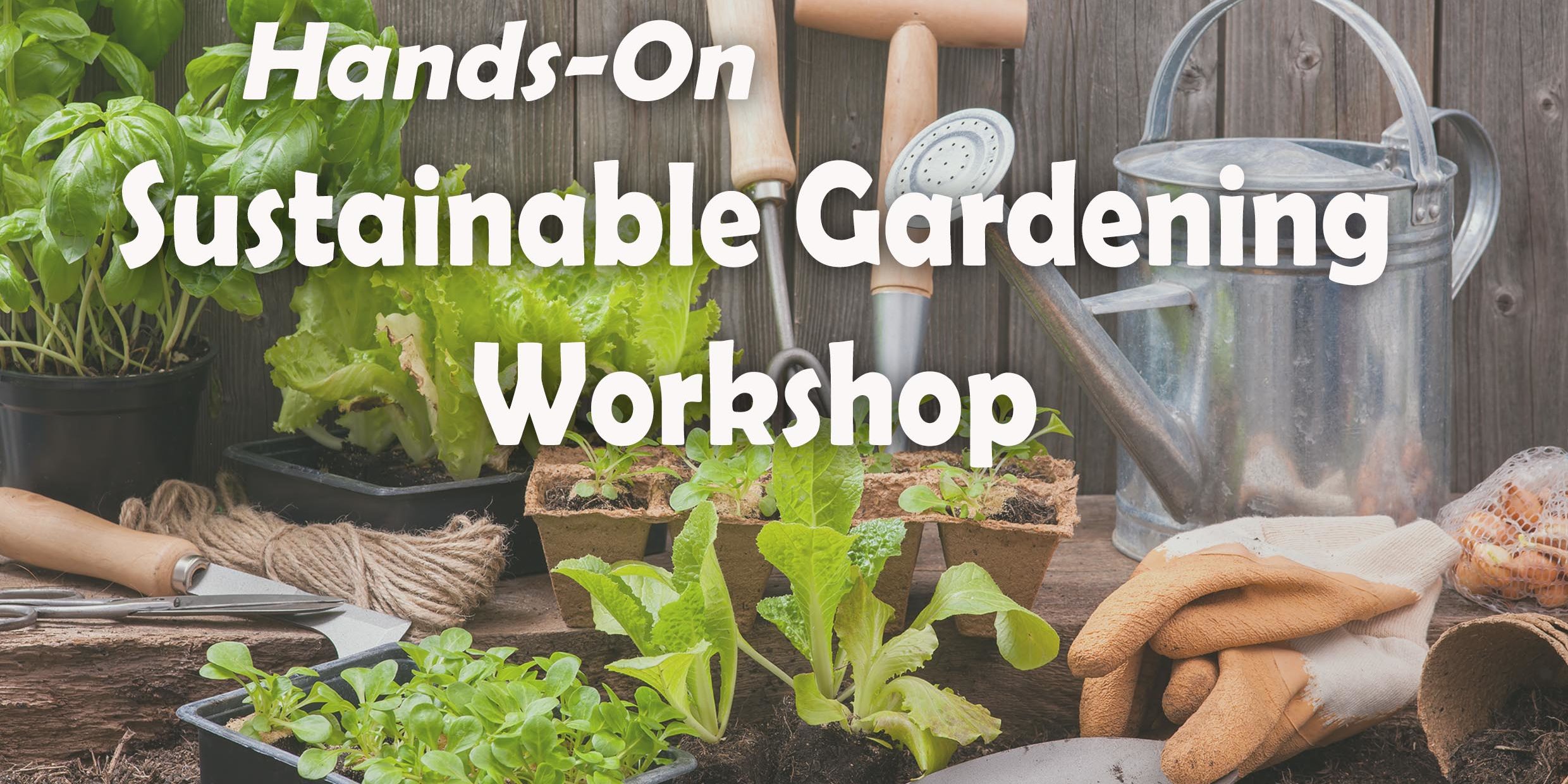Our workshop was facilitated by permaculture practitioner, husband and wife, James Hardiman and Susan Courtney, who aided a morning of discussion on permaculture and what it is, before we spent the afternoon outside applying some of our learning on the plot after lunch.
Intros
Our morning started with a couple of “Getting to know you” sessions – bringing our group together in a “meet and greet” that helped us understand one and other better.
The group was initially split into teams of two that had to answer a checklist of questions with every member of the group. The idea was to find a different person who could give you the answer to a question and the fastest team to complete the list won a prize (- the latest edition of Permaculture Magazine).
The second interactive group session had us talking in small groups of four or five to feed back to the main group about what had brought us to the workshop and why.
Both of these introductory exercises got us mingling and talking to each other as well as to the facilitators and to the group as a whole. It also helped us get to know each other and learn about our experiences with gardening and permaculture better. This gave James and Susan a base from which to guide the rest of our discussion – particularly to address the specific enquiries and interests that individuals had in mind for what they wanted to get out of the workshop.
It turns out, most of us had a basic understanding of permaculture, which was built upon over the course of the day as James and Susan helped us work together on a series of tasks, both horticultural and inter-personal, designed to develop our permie attitudes and knowledge – even if we didn’t realise it at the time!


The best agenda is everyone’s agenda
The content and format of the workshop was conceived to ensure participants achieved certain learning outcomes for the day whilst also helping us take ownership for understanding it ourselves.
A lot of planning went into creating a format that didn’t hold James and Susan as the “external experts” but as people providing some guidance and knowledge from their practical insights and experiences of working with permaculture over the years. This approach put onus on the group’s participation which meant that the outcomes for the day were largely directed by a loose agenda but fundamentally adaptable to what our group wanted to make it. A permaculture approach right from the off!
Admittedly this approach requires an audience open to it. There is no conventional classroom or lecture format to give participants a definitive “How to” or content that the audience can sit back and be told what to take away from it. We were learning something new, in a new way, where we were taken through a process of developing our Attitudes, Skills and Knowledge (ASK mnemonic). Our workshop was more focused on helping us develop our attitude to permaculture. The idea being that once people have experienced the “why” of permaculture, and some of the “what”, they will be motivated to learn the “how” later.


3 “Whats” & “Whys” We Can Apply to Our Gardens
1. Produce no waste
– Find ways to re-use leftovers from the garden and the home. Composting is a great example of the edible plant life cycle: where we eat the harvested crop then take the left-over kitchen scraps, put them in the compost or worm bin and finally have a natural fertilizer for the garden to grow some more.
– Don’t underestimate how useful “waste” can be. Even so-called garden “pests” and “weeds” have their role to play in natural ecosystems. James gave us the example of the invasive, deep-rooted perennial Horsetail (Equisetum arvense) “weed” which has a long history of use as a medicinal remedy for kidney and bladder troubles, arthritis, bleeding ulcers, and tuberculosis amongst a whole host of other ails.
Similarly, the lowly nettle is less a “weed” than a wonderful natural fertilizer which is rich in nitrogen making it good activator for compost. Nettle tea can also be used to supplement plants with nitrogen, chlorophyll, magnesium, sulfur, iron, potassium, copper, zinc and calcium. And as James pointed out, it’s great to give to plants getting to their flowering/fruiting stage for its tomorite. But not only that, nettles are great insect attractors for the garden and even have a number of medicinal uses for us, including being astringent, diuretic and nutritive. They’re known to be a circulatory stimulant, to lower blood sugar and traditionally have even been used to prevent scurvy.
2. Plant perennials
– Perennial crops don’t need to be replanted every year so they conserve energy and prevent us having to disturb the soil as much. Although slow to get going, once they do, perennial edibles will keep producing high yields for years and years. It really is a win-win, given that we ultimately have to do less work for more gains.
– Placing plants together in the right combinations (“guilds”) helps them to grow in cooperation with each other rather than in competition. In this way, the whole garden ecosystem becomes greater than the sum of its parts. James and Susan couldn’t praise deep-rooted perennials enough – especially comfrey. These garden gems mine the subsoil for nutrients so that when they’re cut, or drop their leaves, the nutrients are deposited on top of the soil. The plant matter then becomes mulch and when it breaks down it feeds the more shallow rooted plants.
Some perennial plants James and Susan mentioned:
- Comfrey
- Horseradish
- Jerusalem artichoke (Sunchoke)
- Artichoke
- Asparagus
- Dandelion
- Rhubarb
- Sorrel
- Fruit trees
- Berries (black, red, blue, straw)
3. Use all the space (including the edges) & diversify
– A permaculture garden makes use of all possible space. Even marginal spaces that may not be suitable for traditional garden beds can be turned into productive areas. The key is to make the most of what you have by understanding the site and conditions and adapting to them and how they change over time. As permaculture gardeners, we experiment and diversify to work with nature instead of trying to control it – which means there are no mistakes, just lessons pointing you toward better solutions.
– Designing the garden in small, diverse parts means that each area can contribute to the overall (resilient) system and function of the garden over time. Permaculture can even be applied to pots. For example, Susan produced a yield of over 10kg of blueberries from 5 blueberry bushes planted in pots at home. Once you know what will grow, where, you can identify nuances like having heat-loving vines like beans and squash growing on the side of a brick wall to benefit from the stored thermal heat, whilst also softening the visual edge between the garden and the built environment. Even dark nooks and crannies can be used to cultivate crops like mushrooms.
Next up, we took our skills outside to the garden… Read Part 2 here.








